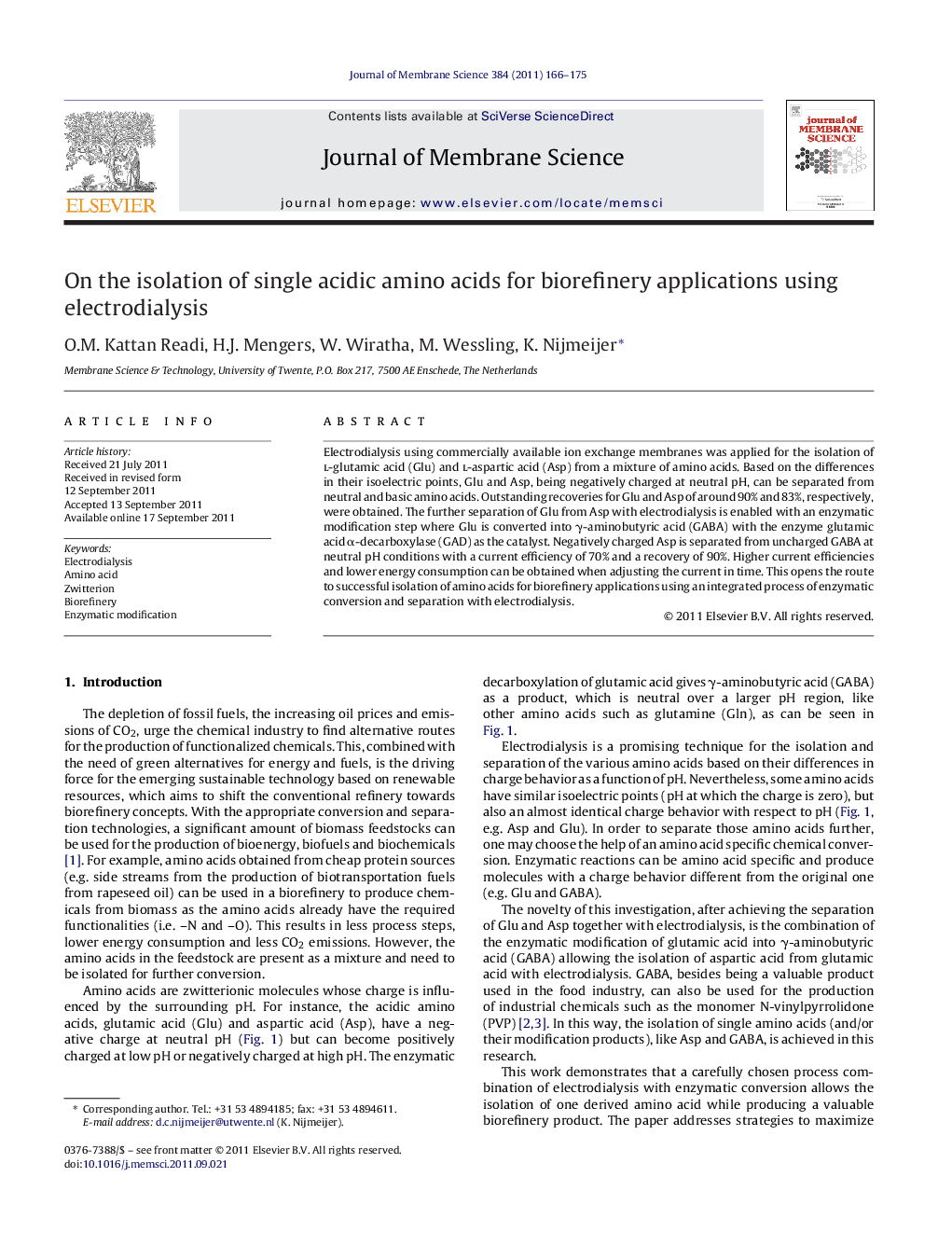| کد مقاله | کد نشریه | سال انتشار | مقاله انگلیسی | نسخه تمام متن |
|---|---|---|---|---|
| 635400 | 1456095 | 2011 | 10 صفحه PDF | دانلود رایگان |

Electrodialysis using commercially available ion exchange membranes was applied for the isolation of l-glutamic acid (Glu) and l-aspartic acid (Asp) from a mixture of amino acids. Based on the differences in their isoelectric points, Glu and Asp, being negatively charged at neutral pH, can be separated from neutral and basic amino acids. Outstanding recoveries for Glu and Asp of around 90% and 83%, respectively, were obtained. The further separation of Glu from Asp with electrodialysis is enabled with an enzymatic modification step where Glu is converted into γ-aminobutyric acid (GABA) with the enzyme glutamic acid α-decarboxylase (GAD) as the catalyst. Negatively charged Asp is separated from uncharged GABA at neutral pH conditions with a current efficiency of 70% and a recovery of 90%. Higher current efficiencies and lower energy consumption can be obtained when adjusting the current in time. This opens the route to successful isolation of amino acids for biorefinery applications using an integrated process of enzymatic conversion and separation with electrodialysis.
Figure optionsDownload high-quality image (124 K)Download as PowerPoint slideHighlights
► Amino acids are separated with electrodialysis for the production of biochemicals.
► High recoveries, high current efficiencies and low energy consumptions are achieved.
► Enzymatic conversion is considered for the isolation of one derived amino acid.
► The behavior of pH, voltage and conductivity is discussed in detail.
► Strategies to maximize product recovery by process parameters are addressed.
Journal: Journal of Membrane Science - Volume 384, Issues 1–2, 15 November 2011, Pages 166–175